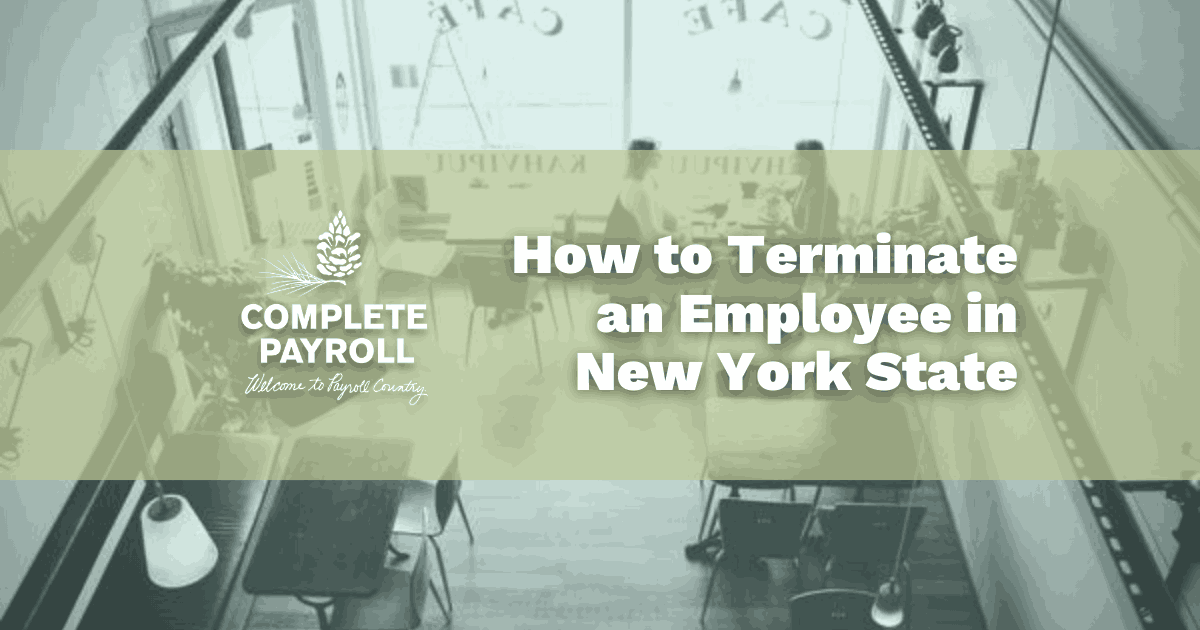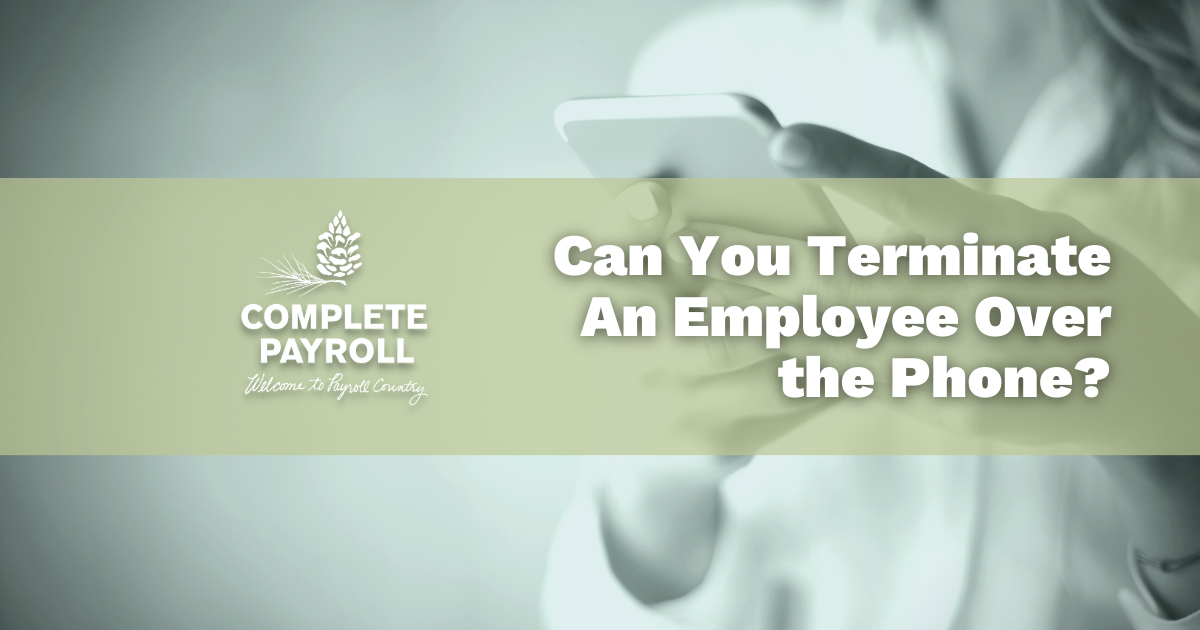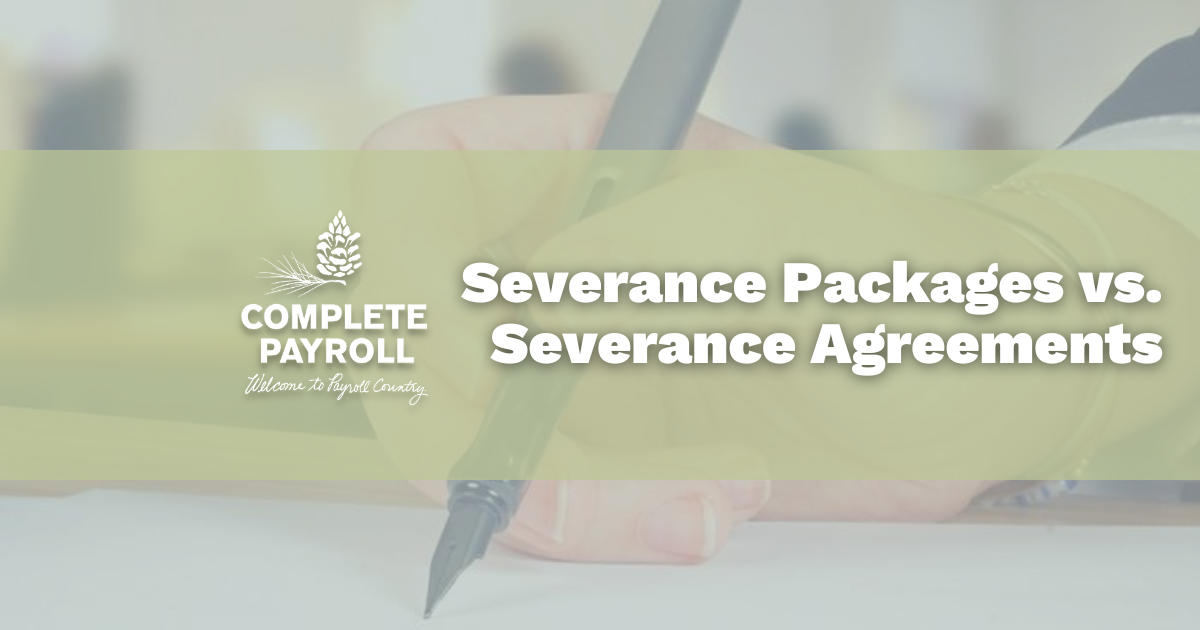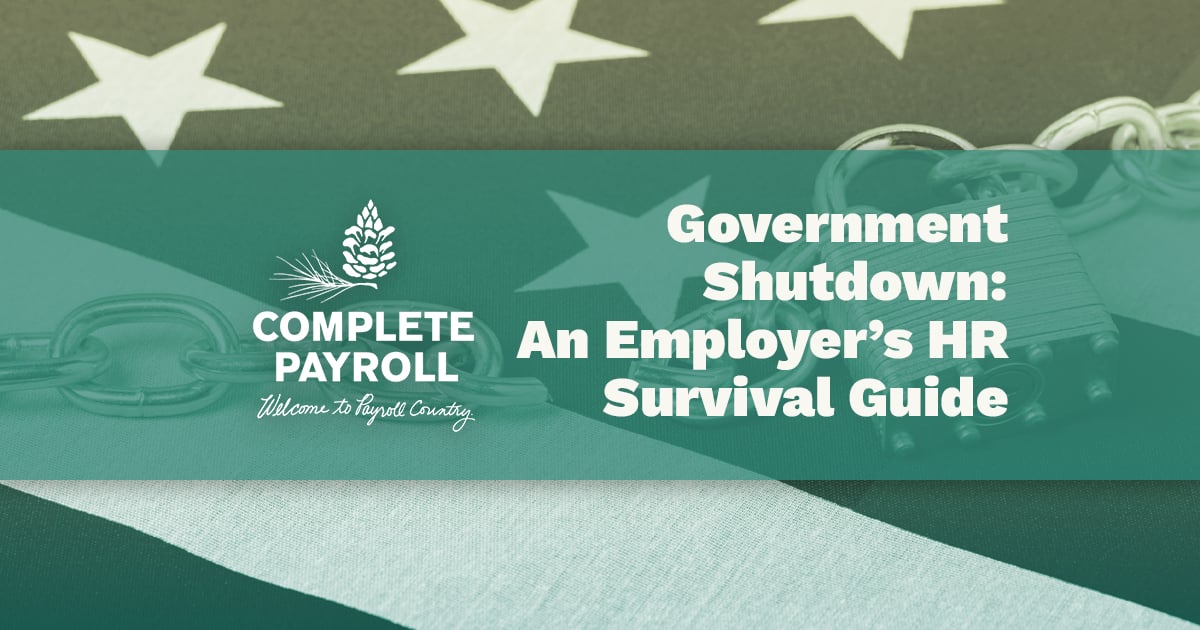Employee Terminations
Terminating an employee is literally the worst, even when it's necessary. This complete resource page will help take you through the specifics of the progress to make it easier and keep you and your business compliant.
Introduction
There are many joys when it comes to managing employees. Termination, however, isn’t on the top of anyone’s list. Regardless of your skill level, employee termination is fraught with negative emotions, disappointment, and a sense of failure. And it can be just as hard on the employees who remain, who often worry about their own job security and find themselves picking up additional responsibilities until a replacement is hired and trained.
But just because nobody particularly enjoys termination doesn’t mean you should put off thinking about it until absolutely necessary. In fact, learning how to handle terminations effectively is a critical part of any manager’s job.
What is employee termination?
There is definitely a lot of confusion about what termination is and isn’t, since there’s significant overlap in terms.
Termination: When an employer decides to end someone’s employment permanently. This includes firing, permanent layoffs, and ending someone’s contract early. It does not encompass voluntary resignations, temporary layoffs, or the natural end of a temporary contract or seasonal position.
Firing: This is when someone is terminated for cause, such as inability or unwillingness to fulfill job responsibilities, violation of workplace rules, or other misbehavior. Employees who are fired are typically, but not always, ineligible for rehire.
Layoff: The permanent or temporary elimination of a position for reasons to do with the business (finances, restructuring, etc) rather than the employee. Laid-off employees are often eligible for rehire.
Resignation: When an employee decides to end their work with a business, rather than the manager. (Sometimes managers will encourage employees to resign rather than firing them.)
Why termination is important
If you’ve done much hiring, you know that having the right people on your team is critical. But this also means making sure that the wrong people are not on your team. Everyone makes occasional mistakes in hiring. Employee strengths and interests change over time. The nature of the work your team does may shift and expand.
There is a number of reasons why someone might not be right for the position they hold. And unless you are armed with the skills to remove those people, your team’s satisfaction and productivity will suffer as a result.
Being good at employee termination isn’t something to be ashamed of. It’s a vital part of being a leader.
Need help getting organized around employee termination?
Our NYS Employee Termination Kit has all the forms and checklists you need, bundled into one convenient web page.
The rules that govern employee terminations
Given how large an upheaval termination can cause in an employee’s life, it’s no surprise that there are quite a few laws that touch on why, how, and when an employee can be terminated.
Equal Employment Opportunity Commission
The EEOC is concerned with issues of discrimination. Its rules state that you cannot terminate an employee for any of the following reasons:
- Race
- Color
- Religion
- Sex (including pregnancy, sexual orientation, and gender identity)
- National origin
- Disability
- Age (over 40)
- Genetic information (including family medical history)
Additionally, you cannot fire an employee for reporting discrimination based on one of these categories, participating in a discrimination lawsuit, or opposing discrimination (such as threatening to report it).
These restrictions apply both to firing and to layoffs. For example, you cannot decide which employees to lay off by looking at their ages and picking the oldest ones under the assumption that they’re potentially closer to retirement.
For specific information regarding employees who are or who become disabled, you’ll want to read up on the Americans with Disabilities Act.
Family and Medical Leave Act
The FMLA provides certain employees with up to 12 weeks of unpaid, job-protected leave for employees in one of the following circumstances:
- The birth of a child
- The placement with the employee of a child for foster care or adoption
- To care for an immediate family member with a serious health condition
- To take medical leave when the employee is unable to work because of a serious health condition.
The FMLA does not restrict you from terminating an employee during or after their leave. It does, however, put the onus on the employer to show that the termination did not occur because of their leave. In general, it is okay to terminate an employee on leave if you can show through documentation that the decision to terminate the employee came about due to their work or behavior before taking leave.
Uniformed Services Employment and Reemployment Rights Act
USERRA prohibits discrimination based on military service and requires employers to allow leave for uniformed service members who are called to serve. It’s a complex law with lots of parts, so if you have any employees who are in the military (including the Reserves and National Guard) or other uniformed services (the Public Health Service Commission Corps is covered by USERRA, but NOAA Corps is not), it’s worth looking over.
When it comes to termination of a uniformed service member who has taken leave to serve, USERRA has some fairly strict rules.
- Those reemployed after 181 or more days of leave cannot be terminated without cause for one year following their return.
- Those reemployed after a leave of 30-180 days of leave cannot be terminated without cause for six months following their return.
New York State Laws
Like most states, New York is an at-will employment state, but there are a number of state-specific regulations regarding termination. For more information on these, visit How to Terminate an Employee in New York State and download the NYS Employee Termination Kit.
Special Circumstances
Government agencies and unionized workplaces may have additional guidelines in place that regulate why, how, and when employees can be terminated. You will need to investigate what rules are in operation at your organization or agency.
Helpful Articles
Before terminating an employee
Except in extreme circumstances, termination should never come as a surprise to an employee. In making both your expectations and your disciplinary process explicit, you not only avoid the appearance of discrimination, but you also ease the concerns of your good employees, who naturally want to be sure they’re not at risk of losing their positions as well.
Make your expectations clear.
Perhaps you have an employee who consistently fails to deliver in one particular area of their job. Have you checked to make sure that they know this is a core part of their position? Is it in the job description? Have you had a conversation about it? It may feel like common sense to you, but without your perspective and experience.
This is especially true of younger employees who are new to the workforce, career changers from radically different industries or settings (switching from a tech startup to a Big 4 accounting firm, for example), or those who have been out of the workforce for many years. “We start at 8:30” can mean “Be here at 8:30,” “We tend to start around 8:30,” or “You need to be clocked in and have your computer booted up before 8:30 so that you are prepared to start work.” If an employee hasn’t worked in an environment like yours before, they wouldn’t necessarily know what you mean unless you explain things in those terms.
Offer regular feedback.
If the rules and responsibilities of the job are clear do your employees know how well they are doing in meeting them? It’s nice to have some quantitative goals that employees can track themselves so that they know whether or not they are hitting them. Getting X new funders for your nonprofit’s new project is an example of that sort of thing. But other expectations are trickier to quantify or require a manager’s perspective. How well does the employee communicate during presentations to clients? How are they at anticipating issues and making plans to deal with them? How effective is their time management?
If you have an employee that has awful communications skills, needs to be micromanaged in a position that requires initiative, and consistently procrastinates on important projects, starting on a path that may lead to termination can make sense. But offering regular feedback on performance (both positive and negative) can sometimes help to nip negative habits and behaviors before they become an unsolvable issue. Don’t let issues compound until it’s annual review time! If you can sit down with your employee and discuss their presentation style after one bad attempt, you can get them into a Toastmasters club, help them an outline, and give them the opportunity to rehearse in front of you. Providing good feedback reduces the chance that you’ll need to terminate someone for incompetence. And as a bonus, you’ll make your good employees feel a lot better about their work as well.
Follow your progressive discipline policy.
Discipline policies vary from one organization to another but tend to follow the same general pattern.
- Verbal warning: This is a more casual warning: “Hey, I need you to stop wearing sandals to work. There are days when I might need you to get something from the warehouse for me, so you need to wear closed-toe shoes to work even though you’re normally in the office.” Although this is a verbal warning, that doesn’t mean you shouldn’t write anything down for your own records. Note the employee, date, and nature of the warning so that you can track whether the issue is a recurring one.
- Written warning: This is used when a minor issue becomes a recurring problem, or for more serious issues when it makes sense to skip over the first step. At this point, you’ll need to sit down with the employee in private (having another manager present as well can be useful) and go over a typed copy of what has occurred, what must change, and what the consequences can be for failure to meet those expectations, including termination. Performance Improvement Plans (PIPs) are an excellent tool at this point. This is a formal plan that covers:
- Exactly what expectations the employee needs to meet
- The time frame the employee has to meet those expectations
- How the employee will be evaluated, and
- What will happen if they fail to meet expectations.
- Termination: If, after progressive discipline has taken place, the employee is still engaged in an inappropriate activity or failing to meet expectations, you have clear grounds for termination.
Remember that most progressive discipline plans have a clause stating that you can skip straight to termination for egregious offenses. You shouldn’t hesitate to fire someone for abusive behavior or embezzling just because they didn’t receive a warning that it wasn’t allowed.
Helpful Articles
When terminating an employee
Termination is more than just a conversation and a goodbye. There are several moving parts that all need to be coordinated effectively in order to make the process as smooth as possible.
Tackle the logistics.
There are a lot of logistical questions that go into terminating an employee.
- Will you offer any kind of severance?
- Is the employee eligible for re-hiring?
- Will you offer a reference for the employee?
- When will the person be expected to leave?
- How will you manage security concerns, such as email passwords and keys to secure areas?
- If the employee has immediate deadlines that can’t be missed or a shift that must be covered, who will take on that work over the short term?
You need to have answers to these questions before you have a conversation with the employee in question. The last thing you want is to be left unprepared to handle a task that is already unpleasant.
Have the talk.
This should be done in private. If you’re in an open office plan, find a conference room or somewhere else with a door that can be closed; there’s no reason to pile public embarrassment on top of a job loss, no matter how frustrating the employee’s behavior has been. Some businesses prefer to have a third person in the room when having disciplinary conversations, especially those surrounding terminations. If you have another manager or an HR professional to take on this observer role, it’s worth considering.
State upfront that the employee is being terminated; it’s unkind to leave employees in dread and hope for fifteen minutes while you discuss their problematic behavior. Do explain the reasons for the termination, and the logistical details that you have worked out in advance. Allow them to ask questions, but know that there’s no need to listen to belligerence. Having tissues and water on hand is a compassionate gesture, as emotional reactions are not unusual in this situation. If there was a PIP in place, explain how those expectations were not met. Be straightforward but not cruel. Document any questions the employee has, as well as the answers you give.
After terminating an employee
At this point, you may feel like the hard part is over, but there are still a number of issues that need to be tackled after an employee has left.
References
If your employee was grossly inappropriate or engaged in illegal activity, you obviously won’t want to provide them with any kind of reference in the future. But if they were simply bad at their job, it’s worth considering whether you could be a good reference for this person.
- Was the position a bad fit? If they were unable to keep up the necessary pace but were diligent about accuracy in what work they completed, you can honestly share that they might thrive in a position involving a low volume of methodical work.
- Was the environment a bad fit? If they were the type of person who just wanted to put on noise-canceling headphones and does their job alone on a team that required a high level of collaboration, you might enthusiastically recommend them for an individual contributor role.
- Was the lifestyle a bad fit? An employee with an attendance problem due to childcare issues but was otherwise a good employee might do extremely in a part-time position with flexible hours.
If you’re willing to be a conditional reference to your (now former) employee, make sure you let them know exactly what you’re willing to say, as well as what you aren’t. If your business has a policy against giving references (a misguided but common practice), then tell them that as well.
Unemployment claims
There is a good chance that your former employee will file for unemployment. If they do, you will receive a notice from the state that a claim has been filed. If something seems fishy about the claim (for example, if the employee states that they were laid off when they were in fact fired for cause), you can dispute the claim.
If you choose to dispute the claim, you need to be able to prove your case. This is why documentation is so important! Having a written record of progressive discipline and the termination itself will help you to establish the truth of your assertion. (This is also why it’s important, to be honest with employees about why they’re being fired instead of telling them they’re being laid off to spare their feelings.)
Managing your team
In some cases, it’s very apparent why someone was fired. If Janet starts screaming and throwing things one day and has to be escorted out of the building by a security guard, nobody will wonder why she doesn’t work there anymore on Monday. But generally speaking, employee discipline is something that takes place behind closed doors. Other members of the team might not know that Sean was repeatedly missing deadlines or even falsifying time cards. To them, it might seem like he was fired for no reason at all, leaving them to wonder if they’ll be next on the chopping block.
While it’s not a good idea to share private information about performance issues, it’s important to remind people that there is a discipline policy in place and that nobody is let go suddenly without cause.
You’ll also need to figure out a plan for managing the former employee’s workload until a permanent replacement is found. Sometimes this is an excellent opportunity for a promising junior employee to take on some new responsibilities and develop new skills. In general, though, you’ll want to manage the shorthanded team carefully to ensure nobody becomes burned out by the additional work.
If you have any employees (either on your team or in other parts of the company) that might be well-suited to the role, do encourage them to apply. Sometimes the right candidates don’t always recognize themselves without prompting.
Reflection and hiring
Give yourself time to reflect on the employee you terminated.
- What qualities made them unsuited to the role?
- Were there any warning signs when they were hired?
- What could you have done differently to catch the problem earlier?
These reflections will help you to screen candidates as you look to fill the open position. Don’t rush in to plug the hole with the first warm body you find. Take your time. The lesson here is that you need to be pickier when it comes to hiring, not less so.
Recover
Terminating an employee is seriously stressful. Schedule time to relax when you know you’ll need to terminate an employee. Go for a walk. Cook your favorite meal. Indulge in a good book or some live music. Your employees need you to be calm and functional in the hectic days ahead, so take time for self-care.
Recordkeeping
The EEOC requires that employee records must be kept on file for at least one year from the date they were terminated. Additional laws applying to certain industries may require you to keep employee files for longer.
Helpful Articles
Immediate employee terminations
When should you terminate an employee immediately?
There are times when it’s not reasonable to go through a drawn-out disciplinary process with an employee. Immediate employee terminations should not be the norm, but neither should you hesitate to terminate someone immediately when it is necessary.
- Is this person putting others at risk? Examples of this include bullying, harassment, wanton neglect of safety procedures, and violence.
- Is this person violating the law? Theft, fraud, vandalism, etc.
- Is this person damaging your company? Such as verbally abusing customers, making abhorrent statements in public.
- Do you have an explicit zero-tolerance policy regarding a specific rule? If that’s your stated policy, follow it.
In situations like this, you don’t have all the time in the world to prepare. This is why it’s helpful to have a file with all the forms you need for the termination in one place.
Get help terminating an employee
The NYS Employee Termination Kit
We can’t terminate your employee for you, but we can make the process a whole lot easier. Our New York State Employee Termination kit includes forms that cover a wide variety of circumstances, whether you’re firing someone, laying people off, or dealing with a more unusual circumstance like an employee who simply never shows up at work again. It also contains a checklist that will help you stay on track during the termination meeting itself. Termination will never be an entirely painless process, but we’re doing what we can to help your business run more smoothly. Download the NYS Employee Termination Kit today.
Or, get in touch with us.
Complete the form below to get in touch with Complete Payroll. We'll answer your question(s) as best we can and direct you to more information and resources where appropriate.
Bahar Uttam
I have been working with Lacy Smart and her team for the last few years. I have been impressed by her responsiveness, accuracy, and high level of providing client satisfaction. She and her team are a wonderful testament to the organization!
Bonnie Deneef
I have worked with a few different payroll providers during my career. Complete Payroll is absolutely, by far, the most proficient and customer service-oriented provider I have been privileged to work with. Lindsay Ezard goes above and beyond to assist me with any question I may have. Thank You Lindsay!
Cathy Pace
Finger Lakes Wrestling Club Inc
We were referred to Complete Payroll years ago by a board member and haven't looked back since. When I first started working with them, I knew nothing about payroll. My first rep Lacey, and now JoAnn, are great to work with. Working with Complete Payroll has just been a wonderful all-around experience for me.
Christina Wagar
Dr. Christopher Mozrall
Complete Payroll is a great payroll company, and we love our CSR! She always has the answers to my questions without hesitation. There is very little (if any) wait time to get a call back.
Colleen Koll
The first suggestion I made after I joined Shear Ego was that if they were not yet using Complete Payroll, they should be. We continue to be impressed and happy with the quality and friendliness of service, and the excellent newsletters and up-to-date information on all things payroll and HR.
Debbie Klymkow
We moved to Complete Payroll about 3 years ago. It was seamless and working with Lacy Smart on Mondays is a breeze.
Dick Eakins
Norco Farms
Complete Payroll fits my budget, I never get bounced around between customer service reps, and it's very easy to enter my payroll. I simply take a photo of my payroll sheet and email it to my rep. There's never a problem! With them, it's business done, and business done right.
Don Cunningham
Complete Payroll Processing provided an easy transition from internal payroll processing. With payroll as their core competency, CP has the expertise to help mitigate errors and ease the burden of annual updates. Comprehensive reporting gives all the details needed and an organization can operate with an added piece of mind knowing that the payroll service is taken care of.
Eileen Reeves
After nearly 10 years, we are receiving the same or better service than when we started. The ability to reach our dedicated customer service representative in a timely manner is huge when there are deadlines in play. Requests for unique reports and integration with our other vendors has been handled without hesitation. We truly feel a partnership with Complete Payroll.
Emily Wyse
I just love Lindsay! She does an awesome job! She is very responsive and I like that she teaches me how to find things rather than just doing it for me.
Howard Clarke
H Clarke Services
We have been with Complete Payroll for quite awhile now and plan on staying. Thanks!
Watch Howard's Testimonial
John Worth
We have been well served by Complete Payroll. When we have needed support, it was given both in payroll and other employee matters, like handbooks.
Kelly Stephenson (former)
We have been using Complete Payroll for over five years and have found them to be responsive, professional, friendly, and cost effective. Customer service is best judged when something goes wrong. Complete Payroll is always there immediately to help fix the issue. Complete Payroll is a payroll partner, not just a payroll service.
Paul Cronk
I've been very pleased with the service and responsiveness of my CSR, and CP's continued dedication to provide us with all the tools we need to have a successful payroll and HR experience. You are always available when I have a question and always make sure that any problems that arise are worked through to my satisfaction.
Teresa Jackson
We have been customers for many years. Evolution Software is easy to use but, more importantly, Cindy is an email away and her knowledgeable, efficient, and quick to replies to our questions are appreciated. We're very happy with Complete Payroll.
Tina Canali
Complete Payroll is always there if we have a problem or need something special! Their response time is AWESOME!
Denni Harbaugh
My CSR, Andi Dimmick, is The Bomb! She's always friendly, cheery, and with all her clients, makes me feel like she has carved time out for ME. Her customer service is AWESOME, and the personal touch means so much!
Elvira Aletta
Everyone I talk to at CP is friendly and tries to help. If they don't have a ready answer, that's OK. They take the time to find one. Website is user friendly, too. The actual operation of payroll is dependable and reliable.
Peter Varlan
Things go quite smoothly and I have a very good rep: Megan!
Cindy Van Buren
Great customer support and service!
Lisa Lyons
Attica Auto Supply Inc
Friendly, answered all my questions, and never felt hurried.
Bonnie DeNeef
LeeAnn was just wonderful to work with.
Jackie Agusta
Lee Anne is a wonderful trainer. Concise and clear. A pleasure!!
Jennifer Pauly
The program has met our needs! Actually exceeded them!
Sue Budd
Great products, great people and no problems!
Gail Stowe
Stowe Potato Sales
Love working with Complete Payroll, especially with Joann Gaedeke. She is amazing! Very thorough and accurate; takes the pressure from me! Love it!
Nancy Miller
N&G Broadway Inc
Very friendly staff, and you are always on top of the services you offer.
Chris Smith
I appreciate updates that Complete Payroll provides. Site is easy to navigate. Our rep, Karla, is so accommodating and friendly. We appreciate her also. So happy we made the switch to Complete Payroll!
Frances Sweeney
The service that we have received has been EXCELLENT and I can't say enough about Lindsay Ezard's patience and support. Everyone that I have had contact with is professional, knowledgeable, and personable. I have received many calls from your competitors wanting to talk to us but I tell them I am very happy with our service!
Lora Miller
Great company to work with. Wonderful people; knowledgeable, helpful, and friendly!
Helen Cunningham
Customer Service and payroll representatives are excellent!
Sally Kovatch
The program works very well for our company. We like the virtual payroll option and our Account Representative, Ashley, is always very responsive and helpful!
Teri Peters
For 11+ years, Andrea Dimmick has been our CSR. She is extremely competent, helpful, responsive. Evolution portal, once trained, is easy to use and again, if we ever run into an issue, Andrea walks us right through. I would highly recommend... and have!
Nicole Begin
Love working with CPP. They have made life so much simpler for me.
Mary Sutter
I have worked with two other payroll companies and Complete Payroll has been the best in payroll custom packages and customer support! The payroll reports are readable with larger font when printed and program is user friendly.
Laura Lane
The customer service is beyond compare!
Barbie Gozelski
LeRoy Country Club
When I need something, you always help. You're easy to get ahold of; you DON’T put me on hold! I get to email or talk to a real person (Lindsay) and she's always consistent.
Nancy Miller
N&G Broadway Inc
Very friendly staff, and you are always on top of the services you offer!
Patricia Gilbertson
CPP has resources that consistently monitor payroll regulations at all levels that ensures compliance. This is a great boon for a small business with limited personnel.
Elizabeth Barefoot
I have recommended Complete Payroll to my clients for years. You have the best customer service of any payroll company I deal with. I know that mistakes will happen on occasion, but Complete Payroll really works to resolve issues promptly.
Kris Dussmann
We are a Complete Payroll customer and have been very happy with our relationship. We have had no problem referring CPP to our business owner clients.
Margaret Urlacher
Pittsford Realty Corp
Customer Service is awesome! Love Andrea 😀
Liz Maher
Our payroll specialist, Ashlee Adams, is extremely knowledgeable, helpful and quick to respond to all questions and concerns. She has alleviated many stressful situations for our company and is a true pleasure to work with! Thank you Ashlee!
Marybeth Simoneit
Friendly employees, lots of resources.
Kathy Cassetta
You have the best employees working for you. They are professional and a delight to work with!
Joe Czerny
Service reps are so helpful and always available. Andrea is the best!
Mark Logan
I love our CSR Megan. She makes my life so easy. I used to be with one of your competitors and the CSR there treated me like a number. Megan treats me like she is part of my team.
Patty Dugan
Any time I need anything we always have a prompt response from you.
Kris Dussmann
We are a Complete Payroll customer and have been very happy with our relationship. We have had no problem referring CPP to our business owner clients.
Debbie Blacklock
Fantastic service! Friendly helpful staff. Your company was and is the most sourced not only with payroll needs but also with the update and verbal connection with your clients when it came to the COVID-19 PPP. Believe me when I tell you, I had less help from my bank or my Accountant! Thank you!
Recent Articles from the Blog
We're constantly publishing content about payroll, human resources or anything related to managing your people.
Subscribe to Our Newsletter
Twice a month we share relevant and timely blog articles and other resources. No solicitations. No funny business. Just quality stuff to help employers.






































